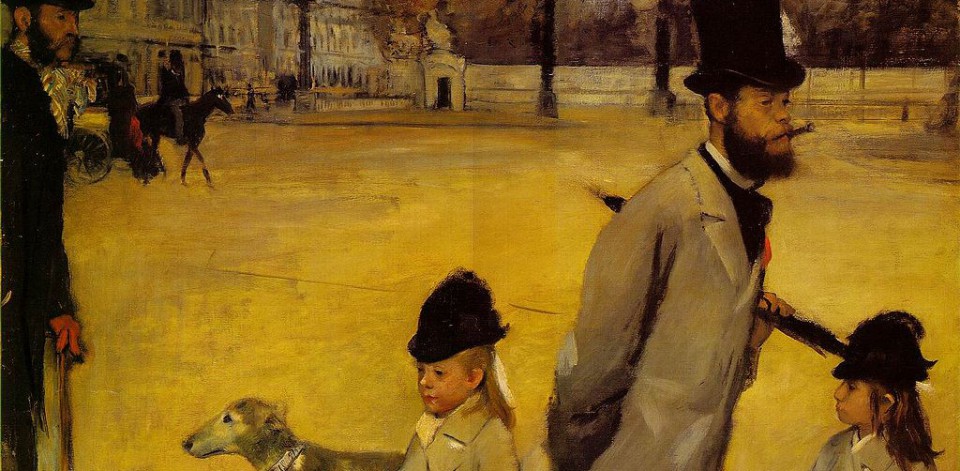It is very well to copy what one sees; it’s much better to draw what one has retained in one’s memory. It is a transformation in which imagination collaborates with memory.
In Place de la Concorde Edgar Degas depicted his friend Ludovic-Napoleon Lepic, an artist, archeologist and patron of the arts, as a flâneur, an archetype essential to any Paris street at the second half of the twentieth century. Flâneurs would stroll along wide avenues of Baron Haussmann’s renovated city without any definite purpose, observing instead of taking part. It was not just the cityscape that was renovated, but also the demographics of the now predominantly bourgeois society evicting the working class. Gustave Caillebotte notably portrayed this alienation among Parisians in his renowned cityscape.
See Gustave Caillebotte’s Paris Street; Rainy Day
The remaining figures – another friend of Degas, writer Daniel Halevy and two Lepic’s daughters do not interact to any extent and are all moving, facing, or looking at different directions. There is a great sense of isolation coming from the figures which is reinforced by the composition. The recognizable square is completely empty, except for the carriage in the upper left and all four characters and the dog are pushed to the foreground.
Another famous work by Edgar Degas portraying an even stronger sense of alienation is the painting from 1973 titled Dans un café, or more often referred to as l’Absinthe, which has a similar off-center composition giving way to empty spaces (an influence of Japanese prints) and cutting off the figures.
This article © galleryIntell


















